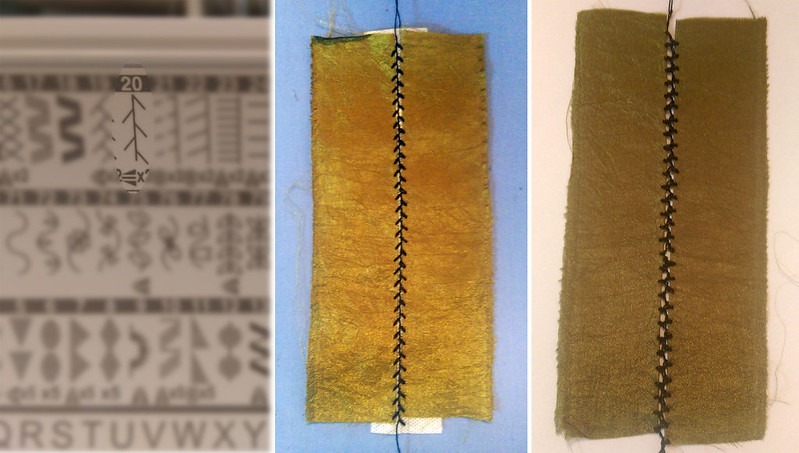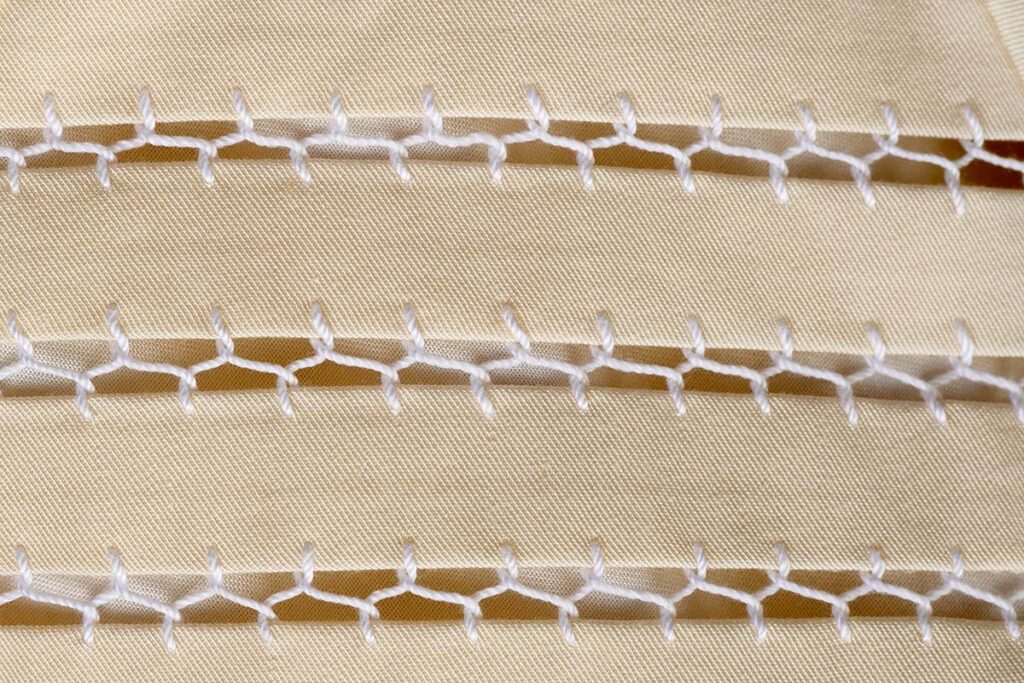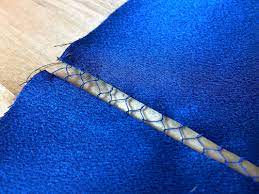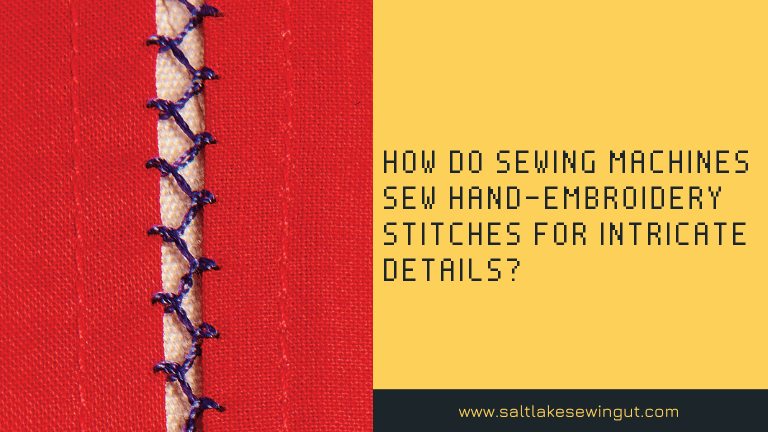Join me on a journey as I share my personal insights into how sewing machines masterfully create these stunning stitches.
Fagoting stitches are a type of decorative stitch that is often used to join lace or fabric strips.
They create a delicate and intricate effect, and they can be used to make a variety of projects, such as tablecloths, curtains, and clothing.
Sewing machines sew fagoting stitches using a special type of presser foot called a fagoting foot. Fagoting feet have a series of grooves that help to guide the fabric strips as they are sewn.

To sew fagoting stitches, follow these steps:
- Select the fagoting stitch on your sewing machine.
- Attach the fagoting foot to your sewing machine.
- Place the lace or fabric strips under the fagoting foot, right sides up.
- Lower the needle and press the foot.
- Begin sewing, slowly guiding the fabric strips under the presser foot.
- Continue sewing until you reach the end of the fabric strips.
- Backstitch to secure the seam.

Tips
- If you are new to sewing fagoting stitches, it is a good idea to practice on a scrap piece of fabric before sewing on your project.
- Use a slow, even stitch speed to avoid puckering.
- Be careful not to overstretch the fabric strips as you sew.
- Use a stabilizer to help support the fabric and prevent puckering.
- Press the seam after you have sewn it to flatten it and make it less visible.

FAQ
What type of fabric can I use for fagoting?
Fagoting stitches can be used on a variety of fabrics, including lace, cotton, and linen. However, it is important to note that fagoting stitches can be difficult to sew on heavy fabrics, such as denim.
What type of thread should I use for fagoting?
You can use any type of thread for fagoting. However, it is generally recommended to use a thread that is slightly heavier than the thread you used to sew the fabric.
How do I avoid puckering when sewing fagoting stitches?
To avoid puckering, be careful not to overstretch the fabric strips as you sew. You may also want to use a stabilizer, such as a tear-away stabilizer, to help support the fabric.
How do I turn corners when sewing fagoting stitches?
To turn corners, simply lift the needle and reposition it at the beginning of the next fabric strip. You can also use a back-and-forth stitch to turn the corner.
Can I use fagoting stitches on different types of fabric?
Absolutely! Fagoting stitches work well on various fabrics but practice on scraps to ensure the desired result.
How do I choose the right stitch length for fagoting?
Experiment with different stitch lengths on scrap fabric to find the one that complements your project.
Can I use a regular needle for fagoting stitches?
It’s recommended to use a needle suitable for delicate fabrics to avoid snags or damage.
What’s the best way to finish off fagoting stitches at the end of the strip?
Secure the end with a backstitch or knot to ensure a stable and finished appearance.
Can I use fagoting stitching for hemming lace edges?
Yes, fagoting stitched are an elegant choice for hemming lace edges, providing a seamless and decorative finish.
Conclusion
Fagoting stitches are beautiful and versatile decorative stitches that can be used to create a variety of projects. By following the tips above, you can easily sew fagoting stitches on your sewing machine and create stunning results.

